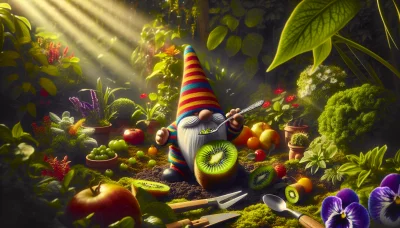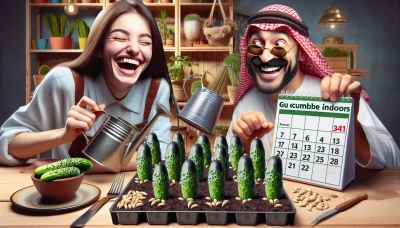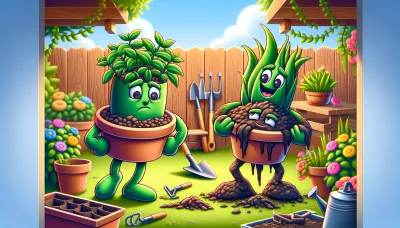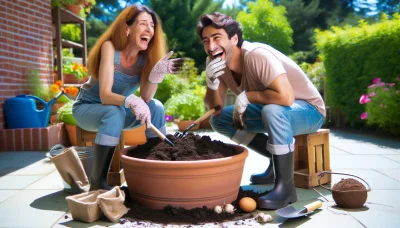Fun with Dish Gardening Quiz
Test Your Knowledge
Question of
Introduction to Dish Gardening
Dish gardening is a unique form of indoor gardening that involves creating miniature landscapes in shallow dishes or containers. This method allows gardening enthusiasts to combine various plants with different textures, sizes, and colors to create a compact, easy-to-maintain garden. Dish gardens are particularly popular among those with limited space, such as apartment dwellers, or as a way to bring a piece of nature indoors. The versatility and creativity involved in designing a dish garden have made it a beloved hobby for many gardening enthusiasts around the world.
Benefits of Dish Gardening
- Space Efficiency: Ideal for small living spaces, allowing for greenery without the need for a garden plot.
- Aesthetic Appeal: Enhances the beauty of any room with creative and decorative arrangements.
- Low Maintenance: Requires minimal care, perfect for busy individuals or those new to gardening.
- Improves Air Quality: Acts as a natural air purifier, removing toxins from the environment.
- Educational: A great way to learn about plant care and horticulture on a small scale.
- Versatility: Offers the ability to grow a variety of plants, from succulents to herbs, in a single container.
- Therapeutic Benefits: Provides a sense of accomplishment and relaxation, reducing stress levels.
- Cost-Effective: Low initial investment and upkeep costs compared to traditional gardening.
Choosing the Right Containers and Plants
When embarking on the journey of dish gardening, selecting the appropriate containers and plants is crucial for creating a thriving miniature garden. The size of the container directly influences the type of plants you can grow; smaller containers are best suited for succulents and small, slow-growing plants, while larger dishes can accommodate a wider variety of plants, including those that grow taller or spread out. The material of the container also plays a vital role in the health of your garden. Porous materials like terracotta allow soil to breathe, making them ideal for plants that prefer dry conditions. Conversely, non-porous materials such as plastic or glazed ceramic can retain moisture longer, which is beneficial for plants that thrive in more humid environments. When choosing plants, consider their growth habits, water needs, and light requirements to ensure they are compatible with each other and the conditions you can provide. By carefully considering the size, material, and plant types, you can create a dish garden that is both beautiful and sustainable.
Step-by-Step Guide to Creating Your Dish Garden
- Select the Right Container: Choose a shallow dish with drainage holes to ensure your plants will not sit in water.
- Pick the Perfect Soil Mix: Use a well-draining soil mix, preferably one designed for succulents and cacti if those are the plants you're using.
- Choose Your Plants: Select a variety of plants that have similar light and water needs. Consider different heights, textures, and colors for visual interest.
- Plan Your Arrangement: Before planting, arrange your plants while they are still in their pots to decide on the best layout for your dish garden.
- Plant Your Garden: Carefully plant your selections in the soil, starting with the largest plant first and working your way to the smallest. Leave enough space between them for growth.
- Add Drainage Materials: If your dish doesn’t have drainage holes, add a layer of pebbles or activated charcoal at the bottom to help with water management.
- Water Your Garden: Once all plants are in place, water lightly to help settle the soil around the roots.
- Decorate: Add decorative elements like pebbles, moss, or miniature ornaments to give your dish garden a personal touch.
- Place in the Right Spot: Find a spot that receives the appropriate amount of sunlight for the plants you have chosen.
- Maintenance: Regularly check your dish garden for watering needs, and prune or rearrange plants as they grow.
Maintenance Tips for Your Dish Garden
To keep your dish garden thriving, it's important to follow a few basic care guidelines. First, watering should be done sparingly; allow the soil to dry out slightly between waterings to prevent root rot. Dish gardens often contain succulents or other plants that don't require a lot of water, so overwatering can be detrimental. When it comes to sunlight, most dish gardens prefer bright, indirect light. Placing them near a window where they can get plenty of light without being scorched by the direct sun is ideal. Lastly, pruning is essential to maintain the shape and health of your garden. Remove any dead or dying foliage regularly and trim back any overgrown plants to keep your dish garden looking its best.
Inspirational Dish Garden Ideas
| Design Theme | Plant Types | Container Type |
|---|---|---|
| Desert Oasis | Succulents, Cacti | Shallow Terracotta Bowl |
| Tropical Paradise | Ferns, Moss, Small Palms | Glass Terrarium |
| Fairy Garden | Miniature Ivy, Moss, Small Flowering Plants | Decorative Ceramic Pot |
| Japanese Zen | Bonsai, Moss, Bamboo | Stone Bowl |
| Modern Minimalist | Snake Plant, Zebra Plant | Geometric Concrete Planter |












